Deborah J. Ross's Blog, page 140
August 28, 2013
The Writer's Life: Interruptions
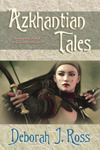
When I first started writing, way back in fourth grade, I
worked on one story at a time. It never occurred to me that it was possible to
have multiple writing projects in different stages. As I got older, the pile of
stories begun and then abandoned grew, too. I noticed how rare it was for me to
return to a story once I’d run out of steam. I either wrote it all the way
through or it ended up on the Pile of Doom. Through high school and college
(summers), I completed more of what I began. My gift to myself after graduating
college was to write a novella, and after graduated school, I finished my first
novel. (All of these were utterly unpublishable, but they had beginnings,
middles, and most importantly, endings.) I was still at the stage of On/Off
writing.
Shortly after my first child brought joy and unanticipated
chaos to my life, my writing career shifted into a new gear, with both fanzine
publications and my first professional short story sale. Over the next decade
or so, I had to learn a new mode of writing: On/Off/On/Off/On…. For one thing,
I often had only very short periods of time in which to madly type out the
scenes I had been rehearsing in my head (see my article, “How I Write When
There Is No Time” in Book View Café’s Brewing
Fine Fiction.) For another, I was
writing both novels and short fiction. Sometimes I’d stick the shorter works in
between drafts of the novels, which was helpful in terms of “clearing my head” so
that I could return to the novel with fresh eyes. Sometimes, I had a specific
market and deadline for the short story and had to set aside the novel in
whatever stage it was in. I would do just that, with no special preparation,
and then re-read what I had written to “come up to speed.” Most of the time,
that would be sufficient to jog my memory about what I intended to come next.
Occasionally I’d be left with the vague and disquieting feeling that I’d
forgotten some brilliant plot twist or other element. Such are the risks of
being a “pantser” (writing “by the seat of the pants”) instead of using
outlines.
Gradually I made more sales, novels as well as short
stories, and improved my skill at alternating projects in different stages (Project
1 first draft – Project 2 – outline – Project 1 revise – Project 2 first draft…
revise). I experimented with sequential leapfrogging and with handling
different projects at different times of day (mornings for revision, afternoons
for first drafts, or vice versa). So far, so good.
Then life handed me Interruptions. Non-negotiable
Interruptions. The good ones involved having to It simply
isn’t professional to tell your editor, “Yes, I know this book has a tight
deadline but I simply can’t set aside this on-spec novella so you’ll simply
have to wait until the muse takes a vacation.”
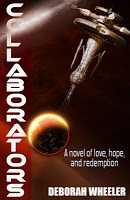
drop whatever new project I was
working on for reviewing copy edits, revising to editorial feedback, or
proofreading a book in production.
Typically, these interruptions run from a few weeks to
several months, depending on the publisher’s schedule and the amount of work. A
few scribbled notes sufficed as memory aids for whatever work I was in the
middle of. This year was different. Because I had 4 novels and a short story
collection scheduled for 2013, I ended up with nonstop
revision/copy-edit-review/proofreading for almost 8 months. And I was in the
middle of a new novel I was very excited about, one of those “attack novels”
that just carries you along as it writes itself. A few notes wouldn’t be enough
to re-capture that momentum. So before I closed the folder for that book, I
spend several days brainstorming and writing down every idea that excited me about
where the plot should go, what crisis points the characters would face, and what
emotional notes I wanted to hit. This wasn’t the same as an outline because I
wanted to keep as many options open as possible – I wanted a playing field rich
in possibilities. If I’m working from an
outline, I’ve already gone through the process of discovery, or a close enough
approximation thereof so that I can trust what I have already created. This
novel, unlike those I sell on proposal these days, did not have an outline. So
when I return to it, I need that original exhilaration and fermentation of
ideas more than I need “this comes next.”
The second sort of involuntary interruption involves an
inability to write. Not “writer’s block” or, as Maya Kaathryn Bohnhoff put it, “writer’s
gap” (you know where you want to end up, just not how to get from here to
there), but a crisis that brings all creative activity to a halt. It can be
internal or external – depression, the death of a loved one, serious illness,
trauma, natural disaster, criminal legal proceedings, child custody disputes –
anything that rocks us so deeply that the connection to our creative selves is
fractured. This happened to me following the first parole hearing of the man
who raped and murdered my mother. I went through a period of several years of
not being able to write (or, for much of it, to read fiction); all my very
tenuous focus went toward surviving from one day to the next. Every unfinished project
stayed that way, and nothing new got started.
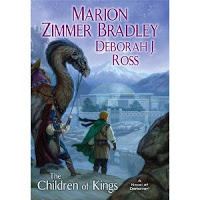
Eventually I recovered enough to look around at the shards
of my career and start picking up what I could. I wrote some new stories, which
helped me to rediscover the focus necessary to tackle a novel-length work
again. I had a few projects “from before” in various stages of completion. One
novel that was at submission level eventually sold. Another I relegated to the
trunk, on the advice of my agent, as too scattered and episodic to succeed. A
couple of novelettes remain in their folders with a few “from before” rejection
slips. I have no idea what to do with them. They have promise but serious flaws
as well.
The thing is that when we return to projects suspended
because of crisis, we do so as a
different people. Interruptions due to crash-and-burn deadlines may
strengthen critical skills, but they don’t generally cause us to reach deep
into ourselves and emerge stronger but scarred. I’m not the writer or the
person I was when I drafted those shorter pieces or that fractured novel. I’m
something different. My life has been put back together in a different shape,
with a different vision. Maybe at some time in the future, something in those
stories will speak to me, but the solutions I come up with then will be very
different from whatever I might have done “from before.”
Sometimes interruptions are just that – a diaper that needs
to be changed, a revision your editor wants next week. But sometimes they aren’t
so much interruptions as they are sideways quantum slips, leaving our lives and
our work forever altered.

Published on August 28, 2013 01:00
August 23, 2013
A Moment of Authorial Glee
Some moments are true high points in a writer's life. Holding a copy of your first book (or an anthology containing your first published short story). Your first fan mail. The first time a reader comes up to you at a convention and says how much they enjoyed your work (even if you secretly fear no one has read it!)
Some moments never become blase -- or shouldn't. Seeing the cover painting for an upcoming release is always fraught with uncertainty. Did the artist "get" it (did the artiste even have a copy of the manuscript to work from?) Did sales glitz triumph over good taste? Did the gender, age, or race of the main character get altered?
I just saw the final cover painting for Shannivar, the second volume of The Seven-Petaled Shield, and am so filled with delight that I'm practically bouncing up and down. Alas, I cannot show it to you because it's not a real cover yet. It needs title, etc., which should be coming along shortly. I just needed to tell someone how right the folks at DAW and my amazing cover artist, Matt Stawicki, got it.
Shannivar is an Azkhantian warrior, that people being based partly on the Scythians and the Mongols. She's Asian, not white, and she's seriously kick-ass. The cover shows her beautiful honey-dark skin, black hair, and slanted eyes. She's wearing warm, colorful clothing that she can actually ride and fight in (as the cover shows!) Matt even got some wonderful details, like the wings on her vest, symbolizing her Golden Eagle clan, and the red hue of the horse her cousin is riding in the background.
Stay tuned for a peek at the real thing!

Some moments never become blase -- or shouldn't. Seeing the cover painting for an upcoming release is always fraught with uncertainty. Did the artist "get" it (did the artiste even have a copy of the manuscript to work from?) Did sales glitz triumph over good taste? Did the gender, age, or race of the main character get altered?
I just saw the final cover painting for Shannivar, the second volume of The Seven-Petaled Shield, and am so filled with delight that I'm practically bouncing up and down. Alas, I cannot show it to you because it's not a real cover yet. It needs title, etc., which should be coming along shortly. I just needed to tell someone how right the folks at DAW and my amazing cover artist, Matt Stawicki, got it.
Shannivar is an Azkhantian warrior, that people being based partly on the Scythians and the Mongols. She's Asian, not white, and she's seriously kick-ass. The cover shows her beautiful honey-dark skin, black hair, and slanted eyes. She's wearing warm, colorful clothing that she can actually ride and fight in (as the cover shows!) Matt even got some wonderful details, like the wings on her vest, symbolizing her Golden Eagle clan, and the red hue of the horse her cousin is riding in the background.
Stay tuned for a peek at the real thing!

Published on August 23, 2013 14:15
August 14, 2013
The "Middle Book" of a Trilogy
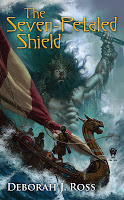
I’m in the process of
proofreading Shannivar, the second volume of a fantasy
trilogy (The Seven-Petaled Shield).
As is typical, I swing between elation at what I’ve accomplished (“This is
brilliant!” “I nailed it!”) and wishing I could take the whole thing apart and
put it back together right. I’m also reflecting on the challenges and joys of “middle
books.”
Middle books present
particular challenges that reflect whether they are truly the second of three
parts or whether they are “the continuing adventures” of a
successful-but-complete first book. A trilogy is like a three-act structure,
only on steroids. The whole work gets fractal, if I’m using that term
correctly. Overall, you have three books, but each book has a three-act or
four-act architecture within it. And each scene has its own buildup and partial
resolution of tension, etc.
In a successful trilogy, the
second book soars. It takes off like a rocket from the firm foundation that has
been established in the first book, using the unresolved or partially-resolved
tension to get a running start. There’s a great freedom in middle books because
the “problem” – the threat or goal – has already been established. It may be
clarified or elaborated or modified, but we’re not starting from scratch. Now
we have the freedom to ratchet up the tension, increase the stakes, have a
gazillion things go wrong wrong OMG DISASTER. I wonder if many middle books
have a soggy quality because they limit themselves to “getting from here to
there” instead of “swamp-malaria-alligators-sinkhole-hurricane-ALIENS FROM SPACE-PLANET
GO SPLODY!” Middle books work when every turn makes the situation exponentially
worse and our characters have to work that much harder and suffer that much
more.
Like the first book and
stand-alone novels, middle books need a three-part structure, too, with plot
twists and rising action. Because they begin at an unstable place, the initial
establishment of character and problem (something the protagonist wants or must
prevent, etc.) can be accelerated. That is, we’re not introducing the problem
or what leads up to it; we’re beginning with what makes that problem even more
pressing. I love it when an author is skillful enough to do this at the same
time as reminding me of the crucial points from the last book, particularly when
it may have been a year or more since I’ve read that. Backstory infodump,
whether in narration, flashback, prolog, or inane “as you know, Bob” dialog, squanders
the momentum that is the parting gift of the first volume to the second. These
things are counterproductive because they are static, backward-looking. The
result is a flabby middle book, one that is stuck with having to “come up to
speed” from a dead-in-the-water halt.
In much the same way the ending
of the first book gives the second a running start by incomplete resolution of
tension, the second book ends in an even less stable, more unsettled place. I
don’t mean that a cliff-hanger is necessary, only that the reader is left with
the certain knowledge that the story is not yet over. We are at a temporary
resting-place, with even greater perils to come. A partial resolution is
necessary for the dynamic shape of the book, but because the book is not
complete in itself – it is part of a larger overarcing tale – all the ends
should not be neatly tied up. (Well, unless we’re talking about our hero being
bound in chains while a dragon approaches…)
At the beginning, I mentioned
“middle” books that are really sequels to stand-alone novels. The author may
leave specific elements unresolved, “open doors” if you will, when submitting a
book in today’s market. Publishers are increasingly reluctant to offer
multi-book contracts to unknown or lesser-known authors, or if the genre is one
in which an author does not already have an established following. Established
midlist authors face the same situation. On the one hand, only a single book
contract may be offered; on the other hand, if the book does well, the
publisher is likely to ask for more in that world with those characters. That’s
where the “open doors” come in, or an author might develop secondary characters
or introduce problems not present in the initial volume. I would say these are
not true “middle books” but sequels in a series. Characters and their conflicts
may carry over from one volume to the next, but the progression structure is
essentially episodic, not one long story told over three acts. This is neither
good nor bad, apples nor oranges; it presents its own set of challenges and
rewards.

Published on August 14, 2013 01:00
August 4, 2013
Puppy and House Rules
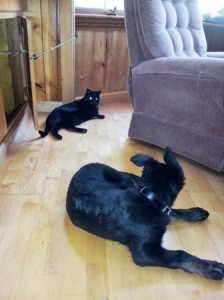
Darcy is almost 12 weeks old, and well on his way to figuring out that our house has Rules. The learning process is faster for some things and slower for others, depending on how rewarding the undesirable behavior is and what the natural consequences are. He'll be about 85 lbs when full grown, so he has no "puppy license" indulgence. It's essential that he learn manners.
First, a few Rules:
Sit nicely for attention
Dogs are not allowed in the kitchen
Dogs get fed only from their bowl and only at mealtimes (except for training treats)
No paws on furniture or people
No chewing on anything but dog toys
Respect the cats
Crate is a fun and safe place to hang out
In addition, we have a few rules that pertain to walkies: walk on loose leash, sit when car, people or other dogs approach and wait for the release signal before moving on, that sort of thing. He's doing quite well with the sit/check-in. We always walk with a bag of tiny liver treats. Good behavior gets marked with "Yes!" and a tasty treat. Interestingly, the first part of this he "got" was the sit-when-car-approaches. He already had the idea of "when in doubt, sit." From there, it wasn't hard to watch for the slightest lowering-of-butt and reinforce it. From there, a full sit. We're in transition from sit-staring-at-car to sit-watching-Mom. Breaking the fixed stare is an important aspect of manners with a high-prey-drive dog like Darcy.
Which brings me to cats. Our two cats are pretty dog-savvy, but will break and run on occasion. This is the most dangerous thing they can do because it engages the dog's prey drive. Right now, when Darcy is still not too coordinated, it's easy for them to outrun him. In another few months, he'll be faster and much stronger. So, since we can't convince the cats not to do this, we have to shape the dog's behavior to create calmer cats.
In the photo, the black cat is relaxed enough to lie down fairly close to the dog, who was asleep. The cat can easily jump on to the window ledge just behind him. He's watching the dog intently and the tip of his tail is raised -- he's alert and a little anxious, but willing to hang out. Darcy has just noticed him and is alerting on him. He hasn't "locked on" completely, and what happened next was the cat moved away, but not in panic. We're seeing the other cat offer play-invitation behaviors, and Darcy do the same to both cats. (For example, cat on bed rolling on back; Darcy with soft gaze, slow tail wag, play bow; both species, soft eyes and look-away, body at angle to other animal or facing away.) Part of what made this encounter successful is that Darcy was already facing away from the cat. As Darcy changed his orientation, the cat let him know that wasn't comfortable. Needless to say, the cats are an irresistible inducement to jump on furniture, but at the same time they are excellent teachers of "Mine!" There's nothing like a (soft) paw swipe to communicate "Paws Off The Sofa!"

Published on August 04, 2013 11:45
July 30, 2013
Puppy and Chopin
It's summer, Mr. Darcy is 10 weeks hold, and here he is, learning to appreciate classical music (as well he should, with a name like Darcy vom Steinbeckland). I'm practicing a Chopin Prelude, much to his enjoyment. Sometimes he flops over my right foot and we have a Discussion. Or he
tries to chew on the pedal. Once or twice, he's tried to "sing," a sort
of subdued howling. Mostly he plasters himself up against the piano.
Lovely to have such an undemanding audience!


tries to chew on the pedal. Once or twice, he's tried to "sing," a sort
of subdued howling. Mostly he plasters himself up against the piano.
Lovely to have such an undemanding audience!


Published on July 30, 2013 09:29
July 17, 2013
Mid-July Reads: A Few Short Reviews
From time to time, I post short reviews of what I've been reading. Here's a new batch:
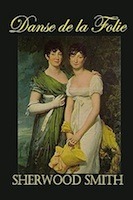 Sherwood Smith’s delightful Regency Danse de la Folie from Book View Cafe.. It’s
Sherwood Smith’s delightful Regency Danse de la Folie from Book View Cafe.. It’s
engaging and fun in a way that doesn’t ask you to leave your intellect
or your knowledge of Jane Austen’s work at the door. Various characters
have various romantic and other adventures before the couples sort
themselves out. (Complete side-thought: our new German Shepherd Dog
puppy, is named Darcy vom Steinbeckland;
he has a tuft of white lace on his chest
and gold dust on his toes; the rest of him will be tall, dark, and
handsome.) (Second barely-related thought: I’d been lamenting not having
an ereader, but the family exchequer wouldn’t cooperate. My younger
daughter addressed this situation by passing on to me her Kindle 1 (I
think that’s what it’s called — the absolutely no-frills e-ink one) so
now I am gleefully working my way through all the BVC books I want!
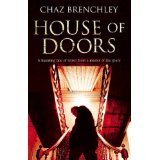 Chaz Brenchley. House of Doors from the UK publisher Severn House, which is also putting out much
Chaz Brenchley. House of Doors from the UK publisher Severn House, which is also putting out much
of Barbara Hambly’s recent work. Newly-widowed British nurse goes to
work at Very Strange gothic house (D’Esperance), treating wounded
soldiers in WWII. One of the earmarks of superlative writing is the
ability to make a sequel (or “middle book”) so appealing and
self-contained that it doesn’t matter whether you’ve read the first
volume. Which I hadn’t. Half the delight in this book is the use of
language — it’s a story to be savored as much for the style as for the
plot. Which plot has some great twists. The cover says, “A haunting tale
of terror…” but although I don’t care for horror as a genre, I loved
the weirdness and how it all wove together. For me, it was as much a
tale of healing as “terror.”
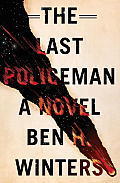 Ben Winters, The Last Policeman.
Ben Winters, The Last Policeman.
This was a freebie from the Nebula Award weekend, and I doubt I would
have picked it up otherwise, but I’m glad I did. It belongs to an odd
subset of novels that, for all their gadgets and rayguns, are
essentially some other genre. Audrey Niffenegger’s The Time Traveler’s Wife
is an example. I think Winters’s book is better, albeit of the gritty
police procedural novel rather than a romance. Earth is doomed — an
asteroid’s going to go smack and end Life As We Know It. With six months
to live, what’s the point of solving a murder? Lots of twists and
layers that left me wanting more.
Francis Knight, Fade to Black. Orbit 2013. I
received this book as a freebie at the Nebula Awards

weekend and don't
think I would have picked it up otherwise -- neither the cover art, the
title, nor the subtitle ("some heroes prefer the shadows" -- how generic
is that???) appealed to me. Once I got into it, however, I found it
picked me right up and carried me along. Sort of a cross between The
Dresden Files, Blade Runner, and film noir, although it doesn't fit
neatly into any of these categories. The story takes place in a city
hemmed in by mountains, forced to grow vertically, layer upon decaying
layer. In this gritty, grimy, oppressive, fear-riddled place, magic
draws its power from pain -- either yours or someone else's. Nicely
constructed, taking us down through the layers of conspiracy and mystery
as we descend into the city's lightless depths. It's billed as the first of a series, but I'm leery about going on with it because this first book stands so well on its own. Too many series are downward slides from a great concept that was then milked out way too long. Trigger warning for
child abuse.
 John Scalzi, Redshirts, Tor 2011/2012. Anyone
John Scalzi, Redshirts, Tor 2011/2012. Anyone
can write a take-off, and at first this one follows very much in the
tradition of not only Star Trek, but Galaxy Quest and a whole host of
riffs-on-a-theme. But Scalzi is a thoughtful writer, one I trust to
repay my reading time with something of more substance. While he folds
twist upon unexpected twist, he weaves in depth and human connection.

 Sherwood Smith’s delightful Regency Danse de la Folie from Book View Cafe.. It’s
Sherwood Smith’s delightful Regency Danse de la Folie from Book View Cafe.. It’sengaging and fun in a way that doesn’t ask you to leave your intellect
or your knowledge of Jane Austen’s work at the door. Various characters
have various romantic and other adventures before the couples sort
themselves out. (Complete side-thought: our new German Shepherd Dog
puppy, is named Darcy vom Steinbeckland;
he has a tuft of white lace on his chest
and gold dust on his toes; the rest of him will be tall, dark, and
handsome.) (Second barely-related thought: I’d been lamenting not having
an ereader, but the family exchequer wouldn’t cooperate. My younger
daughter addressed this situation by passing on to me her Kindle 1 (I
think that’s what it’s called — the absolutely no-frills e-ink one) so
now I am gleefully working my way through all the BVC books I want!
 Chaz Brenchley. House of Doors from the UK publisher Severn House, which is also putting out much
Chaz Brenchley. House of Doors from the UK publisher Severn House, which is also putting out muchof Barbara Hambly’s recent work. Newly-widowed British nurse goes to
work at Very Strange gothic house (D’Esperance), treating wounded
soldiers in WWII. One of the earmarks of superlative writing is the
ability to make a sequel (or “middle book”) so appealing and
self-contained that it doesn’t matter whether you’ve read the first
volume. Which I hadn’t. Half the delight in this book is the use of
language — it’s a story to be savored as much for the style as for the
plot. Which plot has some great twists. The cover says, “A haunting tale
of terror…” but although I don’t care for horror as a genre, I loved
the weirdness and how it all wove together. For me, it was as much a
tale of healing as “terror.”
 Ben Winters, The Last Policeman.
Ben Winters, The Last Policeman.This was a freebie from the Nebula Award weekend, and I doubt I would
have picked it up otherwise, but I’m glad I did. It belongs to an odd
subset of novels that, for all their gadgets and rayguns, are
essentially some other genre. Audrey Niffenegger’s The Time Traveler’s Wife
is an example. I think Winters’s book is better, albeit of the gritty
police procedural novel rather than a romance. Earth is doomed — an
asteroid’s going to go smack and end Life As We Know It. With six months
to live, what’s the point of solving a murder? Lots of twists and
layers that left me wanting more.
Francis Knight, Fade to Black. Orbit 2013. I
received this book as a freebie at the Nebula Awards

weekend and don't
think I would have picked it up otherwise -- neither the cover art, the
title, nor the subtitle ("some heroes prefer the shadows" -- how generic
is that???) appealed to me. Once I got into it, however, I found it
picked me right up and carried me along. Sort of a cross between The
Dresden Files, Blade Runner, and film noir, although it doesn't fit
neatly into any of these categories. The story takes place in a city
hemmed in by mountains, forced to grow vertically, layer upon decaying
layer. In this gritty, grimy, oppressive, fear-riddled place, magic
draws its power from pain -- either yours or someone else's. Nicely
constructed, taking us down through the layers of conspiracy and mystery
as we descend into the city's lightless depths. It's billed as the first of a series, but I'm leery about going on with it because this first book stands so well on its own. Too many series are downward slides from a great concept that was then milked out way too long. Trigger warning for
child abuse.
 John Scalzi, Redshirts, Tor 2011/2012. Anyone
John Scalzi, Redshirts, Tor 2011/2012. Anyonecan write a take-off, and at first this one follows very much in the
tradition of not only Star Trek, but Galaxy Quest and a whole host of
riffs-on-a-theme. But Scalzi is a thoughtful writer, one I trust to
repay my reading time with something of more substance. While he folds
twist upon unexpected twist, he weaves in depth and human connection.

Published on July 17, 2013 15:26
July 12, 2013
Spirituality in the Seven-Petaled Shield
 When most people hear the word spirituality, they think of organized religion, and that in itself
When most people hear the word spirituality, they think of organized religion, and that in itselfis a fascinating topic in terms of world-building. But what I want to talk
about here is how we as writers define and develop the spiritual foundations of
our story. In this sense, spiritual as
distinct from religious can mean mystical,
unworldly, magical, or psychic. I
look at spirituality as those qualities and experiences that are not physical
but can have a profound influence over the experiences and decisions of our
characters. I am well aware that this opens me up to accusations of being woo-woo, and perhaps a different word
would better encompass the ethical, moral, and emotional landscape of a story. Spirituality
creates one of the interwoven layers that answer the question, “What is the story
about?” If the entire answer is some high-falutin’ jargon about the battle between good and evil or love conquers all, the elevator pitch
fails because although these may be themes, they are not story cores. Likewise,
without this dimension, a description of the physical action of the story falls
flat. The Wizard of Oz is “about” a
whole lot more than a girl who gets swept away by a tornado. Nor can it be
described completely as a tale of friendship, courage, and belonging. Stories
are specific, and all of these concepts are general.
 Although the first “Azkhantian Tale” was necessarily set
Although the first “Azkhantian Tale” was necessarily setwithin the sword and sorcery genre by the market I was aiming for, I wanted to
play counter to the prevailing expectations. The market (Marion Zimmer
Bradley’s Sword & Sorceress)
required a strong female protagonist, and that’s the kind of story I wanted to
write. But I didn’t want yet another iteration of the lofty heroines of the “rape
and revenge,” “slaying the dragon,” or “rescuing the prince/ss” type. I wanted
to get away from the physical-strength = heroism paradigm, because there are
many kinds of strength besides that of mighty thews and bulging musculature.
There is strength of heart and of spirit. Strength of
devotion, of steadfastness, of integrity. There is the strength that comes from
having overcome suffering and forgiven the trespassers or having walked
empty-handed among one’s enemies. There is the strength that inspires others to
do the same. To me, all these are spiritual qualities.
In stepping aside from the “one hero against the evil horde”
or “us against them” tropes, I recognized that each of my cultures (and there
are three major and several minor cultures in the trilogy) must have
individuals and traditions that I – and hence, I hope, my reader – find
meritorious. Different people may have different ways of expressing what is
virtuous, but I believe that even in the most distorted and traumatized
society, there are individuals who embody kindness, generosity, and sincerity.
C. S. Lewis talked about this in The
Final Battle when he said that a good deed was a blessing, no matter in whose
name it was performed. (Well, he didn’t say it quite like that; this is my own
interpretation.)
In the opening of the first book, The Seven-Petaled Shield, an ancient city is losing a siege to a
younger, more militant and ambitious race. Meklavaran religion is biblical
(book-based) in the sense that it arises from a holy scripture; its inhabitants
define themselves according to the record of the wisdom of their forebears. So
as the city nears its downfall, our heroine runs off to save the library.
Buildings and treasures can be replaced, she argues, but this written record is
the heart of her people. Continuity with the past is a central value, as is
continuity with the future. As the city falls, her concern is not about saving
her own life but that of her son. So the themes of sacrifice and stewardship,
of preserving a heritage of wisdom and the memories of what her people consider
holy then set the tone for her unfolding adventures. Later, I use this
faithfulness to set up tension with her desire to lead an ordinary life, to
experience romantic love and be mistress of her own affairs.
The invading force, Gelon, is a very different civilization.
They are scientists, empire-builders, and cultural magpies, freely
appropriating what they deem worthy from the cultures they conquer. Their
formal religion consists of a pantheon of gods, some of which become
instruments of mortal political power struggles. Here I found people who valued
the “life of the mind,” keen scientific observation, and logic; I was not at
all surprised to discover that Jaxar, the crippled and chronically ill brother
of the Ar-King, is a brilliant amateur astronomer and physicist, and also that
he’s as close to an atheist as his background allows. Despite the brutality of
his brother and the draconian strategies of his regime, Jaxar is a man of
compassion and integrity. His son, Danar, inherits not only these qualities but
the ability to lead by inspiration rather than coercion.
The third of my major peoples, the nomadic horse people of
the Azkhantian steppe, have a nature-based form of religion and magic. One of
the songs, a lament by a famous heroine (adapted from a Mongolian song),
expresses this unity, and the desire that in death, the singer will return to
the earth the nourishment it had given her:
“May
the strong bones of my body rest in the earth,
"May the black hair on my head turn to
meadow-grass.
"May
my bright eyes become springs that never fail."
The primary deity is the Mother of Horses, reflecting the
primary importance of horses to their very survival. The male aspect of
divinity is her consort, also called the Father of Battles. Both men and
unmarried women are expected to defend their territory against the perennial
incursions of the Gelon, so prowess in horsemanship and archery are highly
regarded. Their songs and stories reflect how they value “glorious deeds,” and
our heroine, Shannivar, dreams of accomplishing feats of such valor as to be
immortalized in song for generations to come. In this character, the needs of
her people coincide with her personal aspirations; her obstacle is the
expectation that at some point, she will relinquish those dreams for a staid
and conventional married life. (And, of course, the forces that threaten her
land and people!)
Dreams, histories, what a person or people hold dear, hope,
despair, love, sacrifice, all these qualities contribute to the motivation of
the characters and the richness of their adventures.

Published on July 12, 2013 10:34
July 5, 2013
Horses in The Seven-Petaled Shield
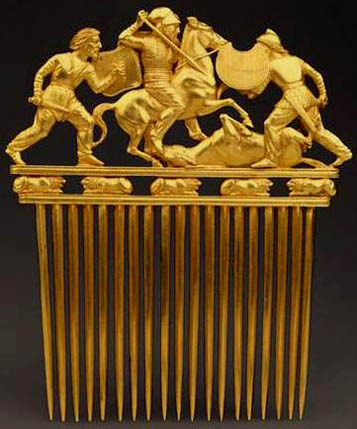
Scythian gold comb
The Scythians were only one of many nomadic horse-faring
peoples who roamed the Central Asian steppe from the beginning of the first
millennium before the Common Era into the 20th Century. Sarmatians,
Cimmerians, Massagetae, Alani, and many others were followed by such groups as
the Hun, Kazars, Uzbeks, Bulgars, and Magyars. Although these peoples differed
in culture, language, religion, and place of origin, they shared the
characteristics of nomadic horse folk. They were highly mobile, superb archers,
and their survival depended on their horses.

Mongolian carving
I based the Azkhantian horses on those used by these
historical peoples. Typically, their horses were small and hardy, not
particularly beautiful but capable of great endurance. Some sources compared them to “primitive” types like Przewalski's Horse. As I developed the Azkhantian
culture more, I delved into the literature about Mongolian horses. I wanted a
breed that could withstand extremes of weather, thrive on poor food and scarce
water, and able to cover great distances, equivalent to or exceeding modern
endurance races. Although the 20th Century brought many changes to
Mongolia itself, I found photographic records and journals from travelers who
visited this area before or shortly following World War I, when mechanized
technology had made few if any inroads into the steppe. The Long Riders Press
has reprinted a number of these travel journals, in particular Mongolian Adventure: 1920s Danger and Escape
Among the Mounted Nomads of Central Asia. Henning Haslund’s tales of his
travels through pre-industrialized Mongolia provided not only descriptions of
the peoples, landscapes, animals, and traditions, but examples of the poetry
and songs, the latter with staff notation. “The Horse With the Velvet Back” and
“The Dear Little Golden Horse” are examples of the importance of horses in this
culture.

Mongolian horses
Haslund wrote: “Most Mongolian horses are finely built, but
the animals from the mountain districts often remind one of the Ardennes horses
on a smaller scale. The average Mongolian horse stands barely fourteen hands,
but what it can do on long journeys is unparalleled. … My new horse was … small
but powerful, and had such control over his legs that he always set them with
precision in the right place. If he snorted and refused to go forward, it
always turned out that he was standing on the edge of a place where there was a
risk of slipping.”
Shannivar’s favorite horse, Eriu, was modeled on Haslund’s
description. Here she races her cousin, Alsanobal:
Alsanobal gave the red his head, and they raced back the way they had come. Shannivar tapped Eriu with her heels. The black gathered his hindquarters under him, then burst into a full-out gallop. The coarse hairs of his mane whipped across Shannivar’s face. She leaned over his forequarters, secretly pleased that they would have their race after all.
Eriu’s speed was like fire, like silk, as intoxicating as k’th. Even on the rough downhill footing, he never missed a step. The air itself sustained him.
By day, you are my wings, the poet sang to his favorite steed. By night, you never fail me.
They plunged downhill, caught Alsanobal on his red, and passed them. Shannivar whooped in triumph.
I based the Azkhantian horses on the Mongolian breeds, for
their hardiness and endurance, their weather-sense and nimbleness. Given the
extent of the inhabited steppe, it made sense to me that there would be
variation among the types of horses, not just of conformation and temperament,
but

the same sorts of characteristics that mark the difference between breeds.
I introduced two particular variations: tundra horses and gaited horses. The
Tundra Horse was a strain of “primitive” horse (like Przewalski’s Horse)
living in the Arctic Circle, sighted as late as the mid 1960s (in northeastern
Siberia). The Yakut pony has the same geographical distribution and is able to
survive extremely severe climactic conditions. So I mounted the northernmost of
the Azkhantian tribes on these shaggy white horses.
I became interested in “gaited” horses through a dear
friend, a lover of Tennessee Walking Horses. All horses have gaits (walk, trot,
canter, gallop) but some are capable of ambling, a four-beat, extremely smooth
and often rapid pattern of movement. These are genetically linked (it’s a
mutation on the gene DMRT3), the way the propensity to either trot (front and
hind feet move alternately) or pace (front and hind feet move together) is.
When I began to research gaited breeds, I realized that the special smooth
gaits were actually a group of distinct patterns, and that some version of a
soft-stepping horse can be found throughout the world, from the Peruvian Paso
to the Missouri Fox Trotter, the Icelandic horse, the Indian Marwari, German
Aegidienberger, and Greek Messara ponies.
Just as people are not uniform in language, customs, food,
or many other aspects, neither are animals
or Asiatic wild ass (Equus hemionus). In our own history, doubt remains whether onagers were ever
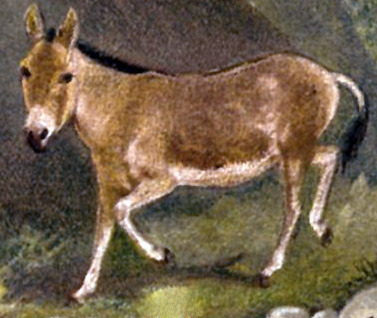 domesticated, being thought too “unruly.” I thought a strong, hardy,
domesticated, being thought too “unruly.” I thought a strong, hardy,intelligent equine – quite amenable to training, for this is a fantasy world --
might provide a reasonable alternative to the horse.
. The Gelon “stone-dwellers,” to the
southwest of the steppe, would not use the same type of animal. Gelon was
originally loosely based on the Roman Empire, with an Italian climate – much
warmer and wetter than the steppe. I decided to not stick with horses, but to
explore parallel agricultural evolution and use historical precedent in giving
the Gelon a strong preferences for the onager.
The carving of the Mongolian horse is by Taylor Weidman/The Vanishing Cultures Project and licensed under Creative Commons. The photo of the grazing Mongolian horses is by Brücke-Osteuropa and is in the public domain. The image of the onager is in the public domain.

Published on July 05, 2013 15:27
July 1, 2013
Women Heroes in The Seven-Petaled Shield

Novels begin in many different ways, drawing their
“motive energy” or “visions of ultimate coolness” from varied sources. Which is
a high-falutin’ way of saying that there is no one right way in which to begin
a story. It can start with a visual image (very common with me, as I’m a visual
writer), an emotional turning-point, or an idea that grabs the imagination. Or
a line of dialog or a melody. Many writers experience a tango-like dance with
their creative inspirations, which ranges from the times the source dictates
its own story in total defiance of genre boundaries and market demands, to
those instances when the writer summons a story to fit certain specifications.
The world of The Seven-Petaled Shield
began with the latter.
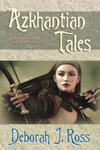
My first professional short story sale was to Marion
Zimmer Bradley for the debut volume of Sword
& Sorceress. (It was, of course, an occasion of much rejoicing!) When the
anthology became an annual series, I kept submitting stories, and looking
around for different cultures and situations. For one of the later volumes (XIII),
I wanted to explore the tensions between a nomadic horse people and a
city-based culture like Rome, and their different values and forms of magic. I
did not call them Romans and Scythians, but these models were very much in my
mind. As I delved further into my research, researching aspects of life and
warfare that spoke to me, I learned that although Scythian women were
definitely second-class citizens, the Sarmatian women rode to battle and were
likely the origin of the “Amazons” of legend. What could be more perfect for a
sword and sorcery story featuring a strong woman protagonist? Thus began a
series of “Azkhantian” tales, in which the women of a nomadic horse people are battle
against the relentless incursions of Gelon (this world’s Roman Empire)?
For the first of these stories, I wanted to depart from
the usual swordswoman or sorceress heroine: a woman who is young, physically
fit, and unattached to family. I’ve often been astonished by the number of such
protagonists who appear to be orphaned only children. In cultures like my
Azkhantian nomads, however, family, clan, and tribe form the core of an
individual’s identity. A host of possibilities opened when I chose a point of
view character who wasn’t physically
involved in the battle, but was deeply emotionally
involved. Hence, most of “The Spirit Arrow” was told from the perspective of an
aging mother, bound to her warrior daughter by more than the natural
enchantment of the heart.
Three more stories followed. The world of the Azkhantians
got bigger as more cultures and histories made themselves known to me. Meklavar appeared on the map, at first
as a remote, mysterious location, a place held in superstitious awe. I had no
plans for exploring Meklavar further, although clearly Meklavar itself, abode
of witches and prophets, had other ideas. It kept nudging me, even when my Sword & Sorceress stories departed
for other worlds.
When at last Azkhantia, Gelon, and Meklavar convinced me
they deserved a novel of their own, I brought the legacy of those early stories
and their female protagonists – mother, warrior, shaman, sister, or daughter,
leader or rebel, outcast or respected elder. Soon it became apparent to me that
this was a really big story-landscape and I couldn’t do justice to the theme in
a single volume.
From the outset, I knew the story must be told primarily
through the experiences of the women. The action begins with the armies of
Gelon laying siege to the citadel of Meklavar, but I was interested in what the
women of the city were doing. The defense and conquest of a walled city has
been related many times in many ways, but usually from the perspective of the
male kings, soldiers, generals, with the occasional wizard assisting either
side. For my initial viewpoint character, I created Tsorreh, the young second
wife of the aged king. She’s inexperienced but neither helpless nor idle; she
organizes medical care for the injured and housing for refugees from the lower
city. She counsels her husband and treats his own wounds, and most of all, she
worries about her adolescent son in his first battle. All of these are
traditional “female” roles. Because she is an educated person and a woman with
initiative, however, she also takes it upon herself to save the library. Shortly after the city falls, she whisks her son
to safety through the mountain tunnels, and she herself becomes the bearer of
the mystical gem that will later play a pivotal role in defeating the
incarnation of chaos in this world.
Along the way, Tsorreh encounters various other women,
some her own age, others elderly, and some who conform to traditional roles but
whose everyday acts of courage and compassion make them noteworthy. Short
stories need to be tightly-focused, with limited space for minor characters,
but novels (or in this case, a trilogy) offer a wealth of opportunities for
cameo appearances, especially those that show the variety of individuals within
different cultures, and personal choices of those individuals. A warrior woman
from the Fever Lands (never named) deliberately provokes a fatal encounter
rather than live as a slave. The teenage daughter of a physician acts quickly
and in a level-headed manner as she helps Tsorreh to escape from the emperor’s
elite guards. Tsorreh makes friends, but she acquires enemies, too, and some of
these are women. The ruthless ambition of one of these becomes the motive for
an important plot point.
The second and equally important woman hero rides onto
the pages of the next book, which is also her namesake: Shannivar. Shannivar is recognizably heroic; she’s a warrior of the
Azkhantian steppe, skilled in archery and horsemanship, determined to
accomplish great feats of valor. She’s the grandchild of the clan matriarch, a
strong and self-reliant woman.
From the very first “Azkhantian tale,” I set up different
systems of magic and of spiritual beliefs in the various cultures, contrasting
the pantheon of the empire-building, city-dwelling Gelon and the nomadic horse
peoples of the steppe, loosely organized into clans (each named for a different
totem animal), living in harmony with the land and its seasons. Their primary deities are, of course, the
Mother of Horses and her consort. Both girls and boys learn to ride and fight,
and young women are expected to participate in the defense of their clan. Then
custom dictates a divergence of roles, for at a certain age women are expected
to set aside their lives as warriors, marry, bear children, and attend to more
domestic chores. Although married women do not hunt or ride to battle, or sit
in formal council at clan gatherings, they wield a great deal of influence.
Only women can own the yurt-like dwellings of willow and felt; men live either
with their mothers or wives or other female relatives.
Shannivar and her best friend, Mirrimal, have reached the
age when they are expected to choose husbands and retire from fighting the
Gelon. Neither is happy about this – Shannivar because she refuses to surrender
her dreams of glorious deeds, Mirrimal because marriage itself is abhorrent to
her. Both women insist on their own self-determination, although with quite
different results. Shannivar’s courage and quick-thinking place her in a succession
of leadership roles, first of a war-party, then of a diplomatic mission, and
finally of a expedition to trace the incursion of uncanny forces into her
world.
In tales of fantasy as elsewhere, we have a tendency to
measure heroes by their physical prowess instead of, for example, their
foresight or moral authority. This approach inherently puts women in non-industrialized
cultures at a disadvantage. Very few women are as physically strong as men or
have the same mass, height, and reach. We can step a little outside the strength=heroism model if we allow that
in some instances, the differences can be minimized by training, appropriate
weaponry, or other advantages. Shannivar is a superb horsewoman and archer. The
height of her horse (and she has two wonderful horses that are heroes in their
own rights) and the reach of her arrows help to mitigate her lesser muscular
strength. More than that, she has the ability to see patterns in battle and to
think in ways that use the assets of her riders – speed, maneuverability – to
best advantage. She has a clear vision of her goals and does not let temper or
ego get in her way, unlike her hotheaded cousin. This enhances her ability as a
strategist and organizer.
All of these qualities can apply to male warriors as
well. What then distinguishes Shannivar as a hero? The quality of her
character, her vision, and her determination to defend her people against
enemies human and supernatural, regardless of cost. Instead of being a
handicap, her refusal to “settle for less” lifts her deeds to extraordinary –
heroic – heights.

Published on July 01, 2013 01:00
June 27, 2013
World-Building in Collaborators – Designing a Gender-Fluid Race

I begin with an excerpt from my last post on Thinking About Gender:
In writing Collaborators, I
wanted to create a resonance between the tensions arising from First Contact
and those arising from differences in gender and gender expectations. It seemed
to me that one of the most important things we notice about another human being
is whether they are of “our” gender. What if the native race did not divide
themselves into (primarily) two genders? How would that work – biologically?
romantically? socially? politically? How would it affect the division of labor?
child-rearing? How would Terran-humans understand or misinterpret a race for
whom every other age-appropriate person is a potential lover and life-mate? Not
only that, but in a life-paired couple, each is equally likely to engender or
gestate a child.
We humans tend to think about gender as binary, and the
concepts of fluidity (changing from one to the other, not necessarily once but
perhaps many times during a lifetime) or being both male and female (or neither)
are fairly recent additions into conventional public discourse. Fluidity is not
the same thing as being transgendered (which is where a person’s gender – their
identity – and their sex – their biological/genetic category) are not the same.
Both are different from sexual orientation, which has to do with attraction to
another person. All too often, if a species that does not fit into the
female/male division is portrayed in media, they’re shown as sexless, not only
androgynous but lacking in sex drive.
I take exception to this. I see no reason why sexual
activity should not be as important to an alien race as it is to human beings.
We have sex for lots of reasons, reproduction being only one of them. It feels
good – no, it feels great. It creates bonds between individuals, whether as
part of lifelong commitments or otherwise. It’s physiologically good for
health, both physical and mental. So for my alien race in Collaborators, I wanted sexuality to be important.
I had the idea
that before pair-bonding, they’d be androgynous in appearance, neither
distinctively male nor female, but highly sexual (at least, post-puberty). Sex
would be something they’d enjoy often and enthusiastically with their age-mate friends.
However, the intimacy created by too much sex with the same person would lead
to a cascade of emotional and physiological effects resulting in a permanent,
lifelong pairing. The pairing, a sort of biological marriage obvious to
everyone around the couple, leads to more changes – polarization into genders,
with accompanying mood swings, aggression, inability to focus – preparing the
bodies of the couple for reproduction. Each partner would appear more “female”
or “male,” which sets up many occasions for misunderstanding with Terran-humans
who think in terms of those divisions (and react accordingly). The Bandari, on
the other hand, would wonder how people who are permanently polarized can get
any work done, and they consistently react to Terran women as if they were
pregnant, and therefore to be protected at all costs.
Just as we’ve instituted the canonical Talk about the
birds and the bees, or sex ed in schools, so the Bandari natives would have systems
of preparing their young people, trying to ensure that pairing does not have
disastrous political or inter-clan consequences. We know how badly that works
in humans, so it’s likely to be equally ineffective with Bandari teenagers,
too. Here’s an excerpt from a scene early in the book, with two young people:
Alon had stayed up far
too late last night, dancing and then lovemaking with Birre. Now he slept on as
Birre cracked the door open and reached up to muffle the chain of porcelain
bells. Birre slipped inside, past the portfolios of antique botanical prints,
round-bellied clay stove, and corner desk. His eyes glinted mischievously as he
bent over Alon.
Alon’s head lolled
against the back of the chair, one arm dangling, loose-jointed as a child. A
patch of sunlight glowed on his face and highlighted the soft fur, turning it
to russet over skin so pale and thin, the veins showed as a threadwork of
darker blue. His flat, unformed breasts barely disturbed the folds of his
tunic.
Suddenly Alon startled
awake, heart pounding. His feet kicked out and the hair along his crest
stiffened. His hands flailed empty space and then, unexpectedly, closed around
Birre’s shoulders.
Alon’s vision leapt into
focus. For a long, terrifying instant, Birre’s face seemed utterly unfamiliar
to him, as if he’d never seen it before. Yet at the same time, he seemed to be
looking into a mirror. They were of an age, although Birre was taller and more
slender, his crest almost burnt-colored. Yet in a heart-stopping moment, those
round black eyes, so unexpectedly serious, seemed to see right through Alon to
the very depths of his soul.
Alon trembled.
Everywhere Birre’s body touched his—hands, knee against thigh, the almost
imperceptible movement of breath over hair—he trembled. But not with the
shivering spasms of lust. Lust he knew well enough, a night’s mutual
pleasuring. This new emotion swept away everything that had come before. He
couldn’t breathe, couldn’t think.
Birre took a step
backward, a graceless stumble. The folds of his tunic slipped through Alon’s fingers.
Despite all the
lingering confusion of his awakening, Alon knew in that moment that this was
what he wanted for the rest of his life—to be turning, ever turning, toward
Birre’s sun.
Birre stood, shoulders
hunched slightly, hands hugging his arms, eyes fastened on a display of
children’s picture books. His nostrils flared and the hairs along his neck
lifted slightly. He stood so still he didn’t seem to be breathing. Noises
drifted in from the street outside, people laughing, the clatter of boot heels
on stone, and a creaking, hand-pushed cart.
Alon moved to stand
behind Birre, aching to take him into his arms. He had been warned—they all
had, at school, by their parents—of the dangers of such a moment. How
instinctive drives could take over, overruling sense, judgment, even personal
taste. Of the disasters of a pairing without intelligent choice. In times past,
before Carrel-az-Ondre, the First Helm, such a union could have serious
political consequences between feuding clans.
Birre’s head dipped and
the movement, almost timid, so unlike him, sent a rush of tenderness through
Alon.
“Alon, I’m scared.”
“Yes.”
“I didn’t...expect it so
soon.”
“Or with me?”
“Oh no, don’t think I
wouldn’t want you.” Birre’s voice roughened with emotion. “Never think that!”
The next moment—Alon
could never tell how it happened—Birre’s arms were around him, hard and tight,
and his heart felt as if it would explode. His breath stuttered through his
throat in a half-sob. He couldn’t make out Birre’s murmured words and he didn’t
care.
Some time later Birre
drew back, pushed Alon to arm’s-length, and looked at him frankly, without any
trace of shyness. His fingers gripped Alon’s arms. “Did you have any idea this
was going to happen?”
Irrational joy surged
through Alon. When he found his voice, he said, “Oh yes, I stayed up all night
planning it.”
The familiar twinkle
returned to Birre’s eyes. “I know what you stayed up all night doing.”
He slipped his arm around Alon’s shoulders. “We should let them know.” Meaning,
of course, his own family. They were an aristocratic sept of one of the eight
ruling clans.
Alon thought that all
his own parents had to do was look at him and they would know. They might even
guess it was Birre because for the past year it had been Birre-this and Birre-that.
It would come as no surprise, either. He and Birre were undoubtedly the last to
realize what was going on.
He turned his head,
found the side of Birre’s neck, and touched his lips to the suddenly attractive
curve there. He inhaled Birre’s scent.
“Be practical, Alon. We
need to decide...if we’re even ready to have a baby.”
“We may not have much of
a choice.” Alon straightened up and touched Birre’s breast gently. Birre
shivered, and the fur of his ruff rose briefly and subsided. “You see?”
Something in the tension
of Birre’s muscles struck Alon as fragile, although he’d always thought of
Birre as being tougher, more decisive, and certainly more athletic. He wanted
to surround that new vulnerability with his own strength.
With an effort, he moved
away. No matter how they polarized, Birre would never be a person to be
protected. And Birre was right, they were too young to be having children, no
matter the biological urgencies of their bodies. Yet the longer they touched
and tasted each other, the faster and deeper the physiological changes would
be. They’d both had the classes; they both should have known what they were
doing.
Knowing and acting were,
however, two different things.
Oh, and should this pique your interest, you can find the book at Amazon and Goodreads and in trade paperback at other online booksellers.

Published on June 27, 2013 01:00



